| Botanical Name |
|
| Family |
Iridaceae - The iris family. |
| Pronunciation |
wat-SON-ee-uh nyz-NAH-nuh |
| Common Name(s) |
Afrikaans: Knysna suurkanol
|
| Plant Group |
- Bulb / Corm / Rhizome / Tuber / Epigeal bulb Bulbs: are made up of fleshy scales as in an onion
Corm: a short, swollen, underground stem that is hard and not fleshy as in a gladiolus
Tuber: a solid, fleshy, underground, storage organ as in a potato
Rhizome: an underground, horizontal, swollen stem at the base of the plant as in an iris
Epigeal bulb: bulbs that rest above the ground with only the roots anchoring the plant to the earth as in albuca
|
| Plant Size |
- Very large
| Tree | Over 25m |
| Shrub | Over 4m |
| Perennial/ground cover | Over 1m |
| Bulb | Over 1.2m |
| Succulent | 1.5m to 2m |
- Large
| Tree | 18m to 25m |
| Shrub | 3m to 4m |
| Perennial/ground cover | 75cm to 1m |
| Bulb | 80cm to 1.2m |
| Succulent | 1m to 1.5m |
|
| Position |
- Sun The area is in full sun for all or most of the day, all year round.
|
| General Information |
- Drought Tolerance: Moderate The plant is moderately adapted to arid conditions and can survive short periods of drought and high temperatures without extra water.
- Evergreen Plants that have leaves all year round.
- Frost: Half-hardy The plant is able to survive low temperatures and some frost but requires protection against severe frost.
- Water Loving Plants need a regular supply of water and must not be allowed to dry out for any length of time.
- Water Moderate These plants will need some extra watering compared to water-wise plants. Plant them together, in at least some shade and in a convenient proximity to the house so that grey water can be utilised during times of drought.
|
| Specific Information |
Watsonia knysnana is a handsome, clump forming plant with tall with sword-shaped leaves arranged in a fan. A distinguishing feature of this watsonia is the thickened yellow edges of the leaves. Its natural habitat is an area of high rainfall throughout the year.
Although much drier with regular periods of drought, Watsonia knysnana grows and flowers well in the Bathurst/Port Alfred area, both in the garden and wild in the veld. It does not however reach the height it does in a wetter habitat, the leaves growing up to 60 cm, with flower spikes no more than a meter.
|
| Ad Break |
|
| Flowers |
| Description |
tubular-shaped flowers opening to 6 broad 'petals' on tall spikes up to 1.6 meters
|
| Season |
- Summer Plants will seldom bloom for the entire season as given in the list, but should flower during a period within these parameters.
|
| Colour |
|
| Growth Rate |
- Moderate Specifying growth rate can be very misleading as there is considerable variation of growth rate depending on type and species of plant, available water, supplementary feeding, mulching and general care, as well as the plants suitability and adaptability to the garden environment.
|
| Plant Uses |
- Accent or Focal Point A plant used to attract the attention because of its colour or form.
- Attracts bees, butterflies or other insects This plant attracts insects which can be food for birds or other creatures in your garden.
- Border A strip of ground, at the edge of a driveway or path in which ornamental plants or shrubs are planted.
- Container Trees, shrubs and ornamental species that can adapt to growing in a restricted environment.
- Cut Flowers Plants that provide flowers suitable for ornamental uses.
- Filler Either a fast growing tree or shrub used temporarily to fill in an area while the permanent plants grow to a desired size, or a plant used to fill gaps in borders or beds.
- Mass Planting Plants useful for filling a large area with just one or a few kinds of plants spaced close together. Creates a bold, dramatic effect and to reduces maintenance.
- Suitable for coastal gardens Plants adapted to dry, sandy soil, forceful wind, limited rainfall and intense sunlight.
- Wild Garden An indigenous garden planted for the benefit of wildlife and birds. Provides food, water, a variety of mini-biomes and no poisonous chemicals are used.
|
| Distribution and Habitat |
from Mossel Bay in the Western Cape to East London in the Eastern Cape; on sandstone slopes and flats, especially at forest edges
|
| Planting Suggestions |
Plant Watsonia Knysnana in rich, well drained soil in a sunny spot. For best results keep well watered throughout the year. Although it will perform well in drier climates, it will be somewhat smaller.
|
| Medicinal Uses |
|
| Ad Break |
|


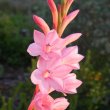
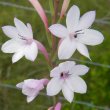
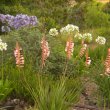
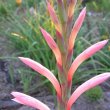
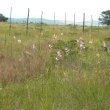
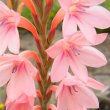
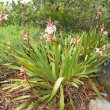
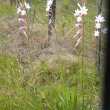


Discuss this plant
Share knowledge, ask a question or give an experience.